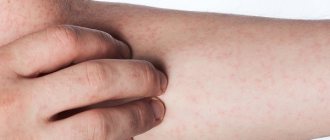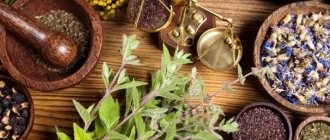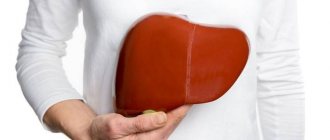Characteristics of the disease
Pulmonary sarcoidosis is a benign systemic disease, which is accompanied by the appearance of granulomas. Granuloma is an overgrown connective tissue that looks like dense nodules. In pulmonary sarcoidosis, granulomas consist of Pirogov-Langhans cells and epithelial cells.
During the initial examination, these granulomas can be mistaken for a manifestation of tuberculosis, so in the early stages this disease is sometimes misdiagnosed. As these nodules grow, they merge with each other and form an inflammatory focus.
Sarcoidosis is a somewhat mysterious disease, because it does not manifest its clinical picture for a long time and it can be difficult to make a correct diagnosis. It is also not an infectious disease; it is impossible to contract sarcoidosis from another person.
The clinical picture of the disease becomes clear only after the granulosa nodules merge and their accumulations begin to impede the functioning of the affected organ. Granulomas can either resolve on their own or, over time, lead to fibrotic changes in the lung tissue.
Traditional medicine therapy
The use of traditional methods for treatment is considered a safer option - the main thing is to carefully follow the recipe, duration of treatment, and dosage.
From propolis
This plant is rightfully considered a universal remedy against many diseases. To prepare a tincture for the treatment of sarcoidosis you will need:
- 10 g propolis.
- 50 ml of purified alcohol.
Photo 1. Herbal collection of propolis, 100 g per package, shelf life 10 years, Russia.
Mix everything and leave for 7-10 days.
insist.
Application: drop 20 drops of tincture into 200 ml of warm water
and take
a glass three times a day.
From radiola
Another effective treatment option for sarcoidosis is the use of Rhodiola tincture, which has a strong absorbable effect. Take the prepared tincture twice a day
(preferably in the first half of the day) before meals -
15-20 drops.
The recommended treatment period is
about three weeks.
From lilac
- 50-70 g of flowers.
- 200 ml vodka.
Pour vodka over the flowers and leave the solution for a week
in a dark place, then use
1 tsp to rub the back and chest.
tinctures for one procedure. Important!
When using this method,
the temperature may rise slightly
, but do not be alarmed - this indicates that the tincture has begun to act.
Causes of the disease
Unfortunately, the real cause of sarcoidosis is still unknown to science. The opinions of scientists are divided: some believe that the reason is genetic, while others think that the reason is the weak functioning of the immune system. Another opinion says that the matter is in pathological biochemical processes.
As a result, at the moment, the cause of the development of this disease is considered to be a combination of the factors listed above, although none of the theories is yet scientifically substantiated.
To summarize, the causes leading to sarcoidosis are currently considered to be:
- biochemical changes in the body;
- genetically determined factors;
- uncoordinated functioning of the immune system;
- pathogens of infectious diseases (protozoa, fungi, microorganisms);
- various environmental factors.
A certain relationship between the occurrence of the disease among different categories of people is determined. It is recognized that the following are more susceptible to pulmonary sarcoidosis:
- tobacco dependent people;
- African Americans;
- women 25-40 years old;
- people of certain professions associated with toxic substances: builders, gardeners, firefighters, mechanics.
Sarcoidosis occurs in various stages. There are 5 of them in total:
- Zero stage. No changes are visible on the x-ray.
- First stage. The lung tissue is not modified, but the intrathoracic lymph nodes are already enlarged.
- Second stage. Granulomas spread to the lung tissue, the lymph nodes are greatly enlarged.
- Third stage. The disease is widespread in the lung tissue, the lymph nodes are of normal size.
- Fourth stage. Fibrous (scar) tissue appears, and the lung tissue becomes denser.
goldenseal
He is goldenseal, he is also the root of the golden seal. Blooms in shady conditions in northern America. It is a small plant with toothed leaves and tiny flowers. Belongs to the “Runcup” family; has a bitter cooling aftertaste.
The root of the plant is used for medicinal purposes. Goldensil is considered a natural antibiotic, and has the ability to “cleanse” the human lymphatic system. The plant is especially useful for sarcoidosis with damage to the intrathoracic lymph nodes.
During pregnancy, the use of goldenseal is not recommended due to its ability to stimulate the uterus.
In the treatment of sarcoidosis with folk remedies, there is the following recipe: a quarter of a teaspoon of the plant in a glass of hot boiled water; take twice a day - morning and evening.
Share the news on social networks
- Related Posts
- Sarcoidosis: treatment with hormones
- Vitamins for sarcoidosis
- Side effects of glucocorticoids
Symptoms of pulmonary sarcoidosis
Early symptoms of sarcoidosis can easily be confused with ordinary fatigue and a variety of other diseases. Only when the disease is already in full swing do signs of respiratory system dysfunction appear.
Signs of pulmonary sarcoidosis:
- increased fatigue;
- lethargy and weakness;
- reduced performance;
- poor appetite;
- weight loss for no particular reason;
- night sweats;
- insomnia;
- fever;
- cough and wheezing;
- dyspnea;
- chest and joint pain;
- labored breathing.
Causes of pulmonary sarcoidosis
Pulmonary sarcoidosis is a type of systemic lesion of the body.
Sarcoidosis belongs to a group of benign systemic granulomatosis affecting the mesenchymal and lymphatic tissues of various organs. In the predominant number of cases, sarcoidosis affects the respiratory system - lungs, bronchopulmonary, tracheobronchial, intrathoracic lymph nodes. With this disease, multiple granulomas form in the affected tissues, which, as they grow, unite into foci of various sizes. Externally, sarcoidal granulomas are similar to tuberculous granulomas, but they are not characterized by the development of caseous necrosis and the presence of mycobacteria. As a result of pulmonary sarcoidosis, pulmonary fibrosis develops or granulomas disappear without a trace. The causes of pulmonary sarcoidosis have not been fully established. There are several theories within which various assumptions are made regarding the occurrence of sarcoidosis in each specific case. Today, sarcoidosis is considered a disease of polyetiological origin, combining immune, biochemical, morphological disorders, genetic predisposition and unfavorable environmental factors.
Diagnostics
At the first signs, an X-ray examination is always carried out, but even this method requires additional confirmation.
The diagnosis is made based on:
- x-ray;
- presence of signs of an inflammatory process in a blood test;
- changes in the number of gamma globulins in a blood test;
- lung biopsy.
These are the main “whales” of diagnosis, but an integrated approach allows you to avoid mistakes, so other parameters of the blood test are also taken into account (ESR, number of eosinophils, monocytes, leukocytes).
Sometimes additional measures are required: ultrasound, computed tomography, Mantoux test (to exclude tuberculosis in the early stages).
Treatment of sarcoidosis of the lungs and intrathoracic lymph nodes
After confirmation of the diagnosis, the patient is monitored for the course of the disease. Over the course of six months, a dynamic course of the disease is observed.
During this period, granulomas can resolve on their own, and if this does not happen and the disease progresses to a more severe stage, then treatment is prescribed.
It takes a long time to treat sarcoidosis, again for 6-9 months. The following substances are used for treatment:
- anti-inflammatory drugs (indomethacin, aspirin);
- steroid medications (corticosteroids, such as prednisolone);
- vitamins with antioxidant effects (vitamin E, retinol);
- immunosuppressants (azadioprine).
With a mild form of sarcoidosis, the patient is registered for about two years, and with a severe form - up to five years. With this disease, the patient is observed and treated by a pulmonologist and rheumatologist, sometimes by a phthisiatrician.
We recommend that you read the article about the medicinal properties of knotweed herb.
There is also a useful article about treating pneumonia with folk remedies.
Here you will learn how to treat pulmonary tuberculosis at home.
Traditional treatment methods
Most often, treatment of pulmonary sarcoidosis with folk remedies is carried out using dietary nutrition.
Of course, the diet is prescribed by a doctor and combined with hormonal medications that affect the functioning of the adrenal glands. It is especially useful to include black rowan fruits, sea buckthorn tinctures, legumes, nuts, raw sunflower seeds and fresh cabbage in the patient’s diet. It is important to note that the disease can be treated with diet only in stages 1 and 2; in advanced forms, a traditional medicinal approach is required. Treatment of pulmonary sarcoidosis using folk methods involves the use of medicinal herbs and improvised means, which in the appropriate combination give an excellent result.
- One of the most effective methods of treating sarcoidosis with folk remedies is a tincture of the following herbs: knotweed, marshmallow root, sage and oregano. Mix everything in equal quantities and pour boiling water over it for half an hour. Then take half a glass half an hour before meals. It is recommended to treat sarcoidosis with this folk method for 45 days, after which they take a break for 3 weeks and drink the infusion for another 14 days to completely recover.
- According to reviews from people who have treated sarcoidosis using traditional methods, a recipe consisting of vodka and vegetable oil helps very well. 30 g of vodka and 30 g of oil are mixed together and drunk 3 times a day for six months. Of course, someone may notice that the treatment is long-term, but the result will be noticeable after a month on x-rays.
- Beaver gland is considered a very good healing agent when infused with vodka. 200 g of beaver gland is mixed with 0.5 liters of vodka or alcohol and kept for a week in a dark place. Then take 30 drops before meals, 2 times a day. To get the best effect, you can additionally consume a spoonful of badger fat.
- The healing properties of propolis have been known for a long time; it also has an effect in the treatment of sarcoidosis. You can buy the tincture at any pharmacy. For a full course of treatment, 100 ml is enough. 40 minutes before meals, take 20 drops of propolis; you can dilute it with a small amount of boiled water.
- Lilac flowers are used to treat not only sarcoidosis, but also bronchial asthma, whooping cough and epilepsy. The fact is that the flowers have diuretic, anti-inflammatory and analgesic properties, as they contain a large amount of organic acids of essential oils. A small amount of fresh flowers is placed at the bottom of a glass jar and 200 g of vodka is poured. Cover with a lid and leave for a week. After this, rub into the lung area from the back. During the first stages of treatment, the patient may have a fever, but this will pass. An increase in temperature indicates that the remedy has begun to act. In parallel with such treatment, you can use various kinds of tinctures; this will only have a positive effect on your body and well-being in general.
Video about the problem of sarcoidosis:
Complications
Sarcoidosis has nothing to do with oncology and does not cause cancer. But this disease can lead to other consequences:
- development of acute respiratory failure;
- the appearance of the so-called “pulmonary heart” in the pulmonary circulation;
- the appearance of special pores in the lung tissue - small cavities that complicate breathing;
- the appearance of fibrous tissue, that is, scars;
- due to decreased immunity, tuberculosis may join the disease.
Treatment of pulmonary sarcoidosis with folk remedies
When treating with folk remedies, it is still worth getting a doctor’s recommendations and using them only as an addition to complex therapy.
People's experience shows that in the early stages of the disease it is quite possible to use natural and familiar remedies, which cannot be said about more advanced forms.
We present to your attention traditional folk recipes for the treatment of sarcoidosis.
Tinctures
Alcohol tincture of propolis
Propolis is a universal remedy that helps against many diseases. To prepare the tincture, take propolis and purified alcohol in a ratio of 1:5. That is, for example, 20 g of propolis per 100 ml of alcohol. Mix everything and leave to infuse for a week. Then add 20 drops of tincture into a glass of warm water and drink one such glass 3 times a day.
Echinacea tincture
Echinacea has an antibacterial, immunostimulating and restorative effect. You can purchase a ready-made alcohol tincture of Echinacea and take it three times a day, half an hour before meals, 40 drops per 50 ml of water. The course of treatment is 3 weeks, then you should take a break. Take the course 2-3 times.
Lilac tincture
If it is now the season of blooming lilacs in your yard, do not miss the opportunity to prepare a healing infusion from it. To do this, pick lilac flowers (so that about a third of a glass comes out) and infuse them with vodka in a dark place for a week. The resulting tincture is rubbed on the back and chest area, using about a spoonful of the product. Sometimes there is an increase in temperature, but this only indicates that the infusion is working.
Rhodiola rosea tincture
Rhodiola rosea has a resolving ability, which comes in handy when trying to get rid of granulomas. So, a ready-made pharmacy tincture of Rhodiola rosea is drunk twice a day (in the first half of the day), 15-20 drops before meals. The course of treatment is 3 weeks.
Ferula stinking tincture (asafetida)
The plant fully lives up to its name, but few others can compare with it in terms of the effectiveness of its therapeutic effects.
Pour 50 g of dried plant roots with 500 ml of alcohol and leave for 2 weeks. Then add 25 drops to a third of a glass of water and take three times a day before meals.
Herbal infusions
The healing properties of herbs also have a positive effect on the treatment of sarcoidosis. Here are the basic herbal recipes.
- Make a collection of the following herbs: oregano, sage, calendula, marshmallow root and knotweed. Pour one tablespoon of the mixture into 250 ml of boiling water and leave to infuse for half an hour in a thermos. Take the resulting infusion one third of a glass three times a day.
- Mix nettle and St. John's wort in equal parts (9 tablespoons each), add 1 tablespoon. a spoonful of chamomile, calendula, plantain and mint. Mix everything and grind. Brew one spoon of the mixture with 500 ml of boiling water for an hour. Take as a medicinal tea.
- Mix: violet root, string, horsetail, celandine and nettle in equal parts. 1 tsp. Infuse the collection in a glass of hot water. Drink half a glass twice a day.
- Eucalyptus is a very useful plant, the healing effect of which is aimed at treating bronchopulmonary diseases. Brew 50 g of eucalyptus leaf in half a liter of boiling water, leave overnight. Drink a cup of this drink twice a day.
- Mix: bird knotweed, plantain leaves, marigold and sage. Brew one tablespoon of the mixture with 0.5 liters of boiling water and leave. Drink a third of a glass 3 times a day.
- Boil a spoonful of chopped elecampane root in a glass of water for 20 minutes, add 7 apricot kernels. Strain the broth, take a third of a glass 3 times a day.
- Mix coltsfoot and cinquefoil herbs in equal proportions, brew as tea and drink one cup a day.
Juice therapy
Juices contain many vitamins and nutrients, so they are successfully used as part of complex therapy for sarcoidosis.
Juices are used both in pure form and in the form of mixtures.
- Carrot juice with milk. Mix 100 ml of freshly squeezed carrot juice and 100 ml of milk, add a large tablespoon of honey. Thoroughly dissolve the honey and drink the entire glass. Drink this mixture 2 times a day.
- Birch juice. Birch sap has a good chemical composition and effectively relieves inflammation. To prepare a healing drink, mix milk and birch sap in equal parts. Take 100 ml per day. Can be replaced with maple juice.
Shevchenko mixture
In folk medicine, Shevchenko's mixture is successfully used. Using this method, you should prepare a mixture of vodka and sunflower oil.
Usually for one dose this amounts to 30 g of unrefined oil per 30 ml of vodka. Shake well to form an emulsion of sorts.
Take a portion of the mixture 3 times a day at regular intervals. You will have to use this method for a long time, but it will definitely bring a positive effect.
Pulmonary sarcoidosis and its treatment at home
Sarcoidosis is a very rare disease. According to the medical classification, it belongs to granulomatosis, that is, with this disease there are inflamed foci - granulomas.
The disease can affect different organs, but pulmonary sarcoidosis occurs most often. Interestingly, the cause of the disease has not yet been established.
Characteristics of the disease
Pulmonary sarcoidosis is a benign systemic disease, which is accompanied by the appearance of granulomas. Granuloma is an overgrown connective tissue that looks like dense nodules. In pulmonary sarcoidosis, granulomas consist of Pirogov-Langhans cells and epithelial cells.
During the initial examination, these granulomas can be mistaken for a manifestation of tuberculosis, so in the early stages this disease is sometimes misdiagnosed. As these nodules grow, they merge with each other and form an inflammatory focus.
Sarcoidosis is a somewhat mysterious disease, because it does not manifest its clinical picture for a long time and it can be difficult to make a correct diagnosis. It is also not an infectious disease; it is impossible to contract sarcoidosis from another person.
The clinical picture of the disease becomes clear only after the granulosa nodules merge and their accumulations begin to impede the functioning of the affected organ. Granulomas can either resolve on their own or, over time, lead to fibrotic changes in the lung tissue.
Causes of the disease
Unfortunately, the real cause of sarcoidosis is still unknown to science. The opinions of scientists are divided: some believe that the reason is genetic, while others think that the reason is the weak functioning of the immune system. Another opinion says that the matter is in pathological biochemical processes.
As a result, at the moment, the cause of the development of this disease is considered to be a combination of the factors listed above, although none of the theories is yet scientifically substantiated.
To summarize, the causes leading to sarcoidosis are currently considered to be:
- biochemical changes in the body;
- genetically determined factors;
- uncoordinated functioning of the immune system;
- pathogens of infectious diseases (protozoa, fungi, microorganisms);
- various environmental factors.
A certain relationship between the occurrence of the disease among different categories of people is determined. It is recognized that the following are more susceptible to pulmonary sarcoidosis:
- tobacco dependent people;
- African Americans;
- women 25-40 years old;
- people of certain professions associated with toxic substances: builders, gardeners, firefighters, mechanics.
Sarcoidosis occurs in various stages. There are 5 of them in total:
- Zero stage. No changes are visible on the x-ray.
- First stage. The lung tissue is not modified, but the intrathoracic lymph nodes are already enlarged.
- Second stage. Granulomas spread to the lung tissue, the lymph nodes are greatly enlarged.
- Third stage. The disease is widespread in the lung tissue, the lymph nodes are of normal size.
- Fourth stage. Fibrous (scar) tissue appears, and the lung tissue becomes denser.
Symptoms of pulmonary sarcoidosis
Early symptoms of sarcoidosis can easily be confused with ordinary fatigue and a variety of other diseases. Only when the disease is already in full swing do signs of respiratory system dysfunction appear.
Signs of pulmonary sarcoidosis:
- increased fatigue;
- lethargy and weakness;
- reduced performance;
- poor appetite;
- weight loss for no particular reason;
- night sweats;
- insomnia;
- fever;
- cough and wheezing;
- dyspnea;
- chest and joint pain;
- labored breathing.
Be sure to read:
How to treat a sore throat at home
Diagnostics
At the first signs, an X-ray examination is always carried out, but even this method requires additional confirmation.
The diagnosis is made based on:
- x-ray;
- presence of signs of an inflammatory process in a blood test;
- changes in the number of gamma globulins in a blood test;
- lung biopsy.
These are the main “whales” of diagnosis, but an integrated approach allows you to avoid mistakes, so other parameters of the blood test are also taken into account (ESR, number of eosinophils, monocytes, leukocytes).
Sometimes additional measures are required: ultrasound, computed tomography, Mantoux test (to exclude tuberculosis in the early stages).
Treatment of sarcoidosis of the lungs and intrathoracic lymph nodes
After confirmation of the diagnosis, the patient is monitored for the course of the disease. Over the course of six months, a dynamic course of the disease is observed.
During this period, granulomas can resolve on their own, and if this does not happen and the disease progresses to a more severe stage, then treatment is prescribed.
It takes a long time to treat sarcoidosis, again for 6-9 months. The following substances are used for treatment:
- anti-inflammatory drugs (indomethacin, aspirin);
- steroid medications (corticosteroids, such as prednisolone);
- vitamins with antioxidant effects (vitamin E, retinol);
- immunosuppressants (azadioprine).
With a mild form of sarcoidosis, the patient is registered for about two years, and with a severe form - up to five years. With this disease, the patient is observed and treated by a pulmonologist and rheumatologist, sometimes by a phthisiatrician.
We recommend that you read the article about the medicinal properties of knotweed herb.
There is also a useful article about treating pneumonia with folk remedies.
Here you will learn how to treat pulmonary tuberculosis at home.
Complications
Sarcoidosis has nothing to do with oncology and does not cause cancer. But this disease can lead to other consequences:
- development of acute respiratory failure;
- the appearance of the so-called “pulmonary heart” in the pulmonary circulation;
- the appearance of special pores in the lung tissue - small cavities that complicate breathing;
- the appearance of fibrous tissue, that is, scars;
- due to decreased immunity, tuberculosis may join the disease.
Treatment of pulmonary sarcoidosis with folk remedies
When treating with folk remedies, it is still worth getting a doctor’s recommendations and using them only as an addition to complex therapy.
People's experience shows that in the early stages of the disease it is quite possible to use natural and familiar remedies, which cannot be said about more advanced forms.
We present to your attention traditional folk recipes for the treatment of sarcoidosis.
Alcohol tincture of propolis
Propolis is a universal remedy that helps against many diseases. To prepare the tincture, take propolis and purified alcohol in a ratio of 1:5. That is, for example, 20 g of propolis per 100 ml of alcohol. Mix everything and leave to infuse for a week. Then add 20 drops of tincture into a glass of warm water and drink one such glass 3 times a day.
Echinacea tincture
Echinacea has an antibacterial, immunostimulating and restorative effect. You can purchase a ready-made alcohol tincture of Echinacea and take it three times a day, half an hour before meals, 40 drops per 50 ml of water. The course of treatment is 3 weeks, then you should take a break. Take the course 2-3 times.
Lilac tincture
If it is now the season of blooming lilacs in your yard, do not miss the opportunity to prepare a healing infusion from it.
To do this, pick lilac flowers (so that about a third of a glass comes out) and infuse them with vodka in a dark place for a week.
The resulting tincture is rubbed on the back and chest area, using about a spoonful of the product. Sometimes there is an increase in temperature, but this only indicates that the infusion is working.
Rhodiola rosea tincture
Rhodiola rosea has a resolving ability, which comes in handy when trying to get rid of granulomas. So, a ready-made pharmacy tincture of Rhodiola rosea is drunk twice a day (in the first half of the day), 15-20 drops before meals. The course of treatment is 3 weeks.
Ferula stinking tincture (asafetida)
The plant fully lives up to its name, but few others can compare with it in terms of the effectiveness of its therapeutic effects.
Pour 50 g of dried plant roots with 500 ml of alcohol and leave for 2 weeks. Then add 25 drops to a third of a glass of water and take three times a day before meals.
Herbal infusions
The healing properties of herbs also have a positive effect on the treatment of sarcoidosis. Here are the basic herbal recipes.
- Make a collection of the following herbs: oregano, sage, calendula, marshmallow root and knotweed. Pour one tablespoon of the mixture into 250 ml of boiling water and leave to infuse for half an hour in a thermos. Take the resulting infusion one third of a glass three times a day.
- Mix nettle and St. John's wort in equal parts (9 tablespoons each), add 1 tablespoon. a spoonful of chamomile, calendula, plantain and mint. Mix everything and grind. Brew one spoon of the mixture with 500 ml of boiling water for an hour. Take as a medicinal tea.
- Mix: violet root, string, horsetail, celandine and nettle in equal parts. 1 tsp. Infuse the collection in a glass of hot water. Drink half a glass twice a day.
- Eucalyptus is a very useful plant, the healing effect of which is aimed at treating bronchopulmonary diseases. Brew 50 g of eucalyptus leaf in half a liter of boiling water, leave overnight. Drink a cup of this drink twice a day.
- Mix: bird knotweed, plantain leaves, marigold and sage. Brew one tablespoon of the mixture with 0.5 liters of boiling water and leave. Drink a third of a glass 3 times a day.
- Boil a spoonful of chopped elecampane root in a glass of water for 20 minutes, add 7 apricot kernels. Strain the broth, take a third of a glass 3 times a day.
- Mix coltsfoot and cinquefoil herbs in equal proportions, brew as tea and drink one cup a day.
Juice therapy
Juices contain many vitamins and nutrients, so they are successfully used as part of complex therapy for sarcoidosis.
https://www.youtube.com/watch?v=BVFwCXk9p60
Juices are used both in pure form and in the form of mixtures.
- Carrot juice with milk. Mix 100 ml of freshly squeezed carrot juice and 100 ml of milk, add a large tablespoon of honey. Thoroughly dissolve the honey and drink the entire glass. Drink this mixture 2 times a day.
- Birch juice. Birch sap has a good chemical composition and effectively relieves inflammation. To prepare a healing drink, mix milk and birch sap in equal parts. Take 100 ml per day. Can be replaced with maple juice.
Be sure to read:
COPD: causes, symptoms, diagnosis and treatment
Shevchenko mixture
In folk medicine, Shevchenko's mixture is successfully used. Using this method, you should prepare a mixture of vodka and sunflower oil.
Usually for one dose this amounts to 30 g of unrefined oil per 30 ml of vodka. Shake well to form an emulsion of sorts.
Take a portion of the mixture 3 times a day at regular intervals. You will have to use this method for a long time, but it will definitely bring a positive effect.
Breathing exercises
To make the treatment as effective as possible, it is advisable to allocate time for breathing exercises.
If the stage of the disease is already accompanied by a cough, then during a coughing attack you should do this: lower your head down, direct your gaze to the floor, and keep your arms crossed on your stomach (at navel level). When coughing, apply slight pressure on the stomach. This way the sputum comes out better.
It is worth paying attention to breathing exercises using the Strelnikova method.
Diet for illness
Of course, nutrition should be balanced and light, that is, simply healthy. But there are some foods whose consumption can have a positive effect on the course of the disease.
Healthy foods:
- sea buckthorn;
- pomegranate;
- black currant;
- apricot pits;
- chokeberry;
- dog-rose fruit;
- onion and garlic;
- fish of any kind;
- protein products;
- nuts;
- vegetable oils.
Fatty meats and alcohol should be limited.
Prevention
To reduce your risk of developing sarcoidosis, you should:
- lead a healthy lifestyle (without bad habits);
- strive to protect yourself from toxic substances and dust;
- regularly engage in physical activity and spend time outdoors;
- Once a year, be sure to be examined by a pulmonologist (fluorography).
Conclusion
Sarcoidosis is a rather rare, unpleasant, but at the same time curable disease. To get rid of the disease, you should contact a competent specialist who will select an effective treatment method. And as part of complex therapy, you can use traditional medicine, the recipes for which are described in this article.
You can learn about the symptoms and treatment features of pulmonary sarcoidosis from the following video:
Reviews
I have been working in construction for 15 years, constantly breathing asbestos and other dust. In general, a year ago I was diagnosed with pulmonary sarcoidosis. The doctor prescribed a course of prednisolone. At the same time, I drank a mixture of vodka and butter for about six months. Now I’m still registered, but I feel much better.
Oleg, 34 years old, Voronezh
After a very long period in which I was not given a correct diagnosis, they finally came to the conclusion that I had pulmonary sarcoidosis. The hospital did not prescribe me treatment, they told me to observe and lead a correct lifestyle.
You can say that I cured myself: I did breathing exercises, walked often, humidified the room and drank sea buckthorn and mint tea, a decoction of licorice roots. Did not consume any animal products.
I had the initial stage, but after my methods the disease did not progress.
Andrey, 29 years old, Tver
Source: https://BezMedikov.ru/narrecept/dyxatelnaya/lechenie-sarkoidoza-legkih-narodnymi-sredstvami.html
Diet for illness
Of course, nutrition should be balanced and light, that is, simply healthy. But there are some foods whose consumption can have a positive effect on the course of the disease.
Healthy foods:
- sea buckthorn;
- pomegranate;
- black currant;
- apricot pits;
- chokeberry;
- dog-rose fruit;
- onion and garlic;
- fish of any kind;
- protein products;
- nuts;
- vegetable oils.
Fatty meats and alcohol should be limited.
How to properly use propolis for lung cancer
Propolis for cancer is used for a long time, at least ten months. Ideally three years. It is used not as primary, but as auxiliary therapy.
The most common way to consume glue is to chew it dry. A piece weighing no more than 12 g is chewed for 10–15 minutes, then swallowed. Do this at least three times a day for a month. After a week, the course of treatment is repeated.
There are other recipes for using bee glue.
Oil
Have to take:
- butter (homemade or farm) – 1 kg;
- bee product – 10 g.
The oil and crushed glue are mixed and evaporated for half an hour until a homogeneous consistency. Take a tablespoon up to five times a day. Take before meals with a glass of milk. The oil can be stored in the cold for no longer than a month.
Tincture
Propolis is used for lung cancer in the form of a strong tincture. For her, take one part at a time:
- alcohol;
- bee glue.
The glue is crushed and filled with alcohol. Leave in the dark for at least two weeks, strain and apply easily. The scheme is as follows: 30 drops are added to a glass of tea or milk, drunk up to five times a day. To avoid dyspeptic symptoms in cancer patients (nausea, vomiting), the tincture is taken before meals.
Since the tincture is very concentrated, it cannot be used by people with gastritis and pancreatitis.
Dosage regimen with burdock roots
Propolis helps well against lung cancer in combination with burdock. Recently, anti-cancer substances were discovered in the rhizomes of this plant, which have a detrimental effect on diseased cells, remove toxins, and purify the blood. To obtain a healing extract you need to take:
- 50 g burdock rhizomes;
- 500 ml alcohol.
Crushed plant roots are poured with alcohol and infused for up to two weeks. Take 50 drops in combination with propolis oil - a tablespoon three times a day. Duration of treatment is at least six months. During this period, it is useful to drink beetroot and carrot juices.
Compress on the chest
Ingredients:
- 0.5 kg butter;
- 100 g of bee product.
The glue is frozen and crushed, the butter is melted. The components are mixed in a blender and applied to the chest for a quarter of an hour.
Reviews
I have been working in construction for 15 years, constantly breathing asbestos and other dust. In general, a year ago I was diagnosed with pulmonary sarcoidosis. The doctor prescribed a course of prednisolone. At the same time, I drank a mixture of vodka and butter for about six months. Now I’m still registered, but I feel much better.
Oleg, 34 years old, Voronezh
After a very long period in which I was not given a correct diagnosis, they finally came to the conclusion that I had pulmonary sarcoidosis. The hospital did not prescribe me treatment, they told me to observe and lead a correct lifestyle. You can say that I cured myself: I did breathing exercises, walked often, humidified the room and drank sea buckthorn and mint tea, a decoction of licorice roots. Did not consume any animal products. I had the initial stage, but after my methods the disease did not progress.
Andrey, 29 years old, Tver
Sarcoidosis, reviews, negative dynamics
The negative experience of the disease or the absence of any significant improvement in the condition is described below.
Evgeniy, Belarus
Stage 2 sarcoidosis was diagnosed in the fall of 2015. Treatment was not really prescribed, since the doctor said that it did not make sense without the presence of symptoms of the disease. I had no shortness of breath or chest pain. Plus, at a young age, it is recommended to refrain from hormonal therapy such as prednisolone.
At first, I listened to the treating doctor, but I still perform a CT scan to monitor the condition. They write that the dynamics are negative.
However, the main thing is not to lose heart. I quit smoking , drink freshly squeezed juices, and try to lead a healthy lifestyle. So everything will be fine. Get well soon everyone!
Nadezhda, Russia
In May 2021, I was tormented by a cough , and therefore went to the doctor. He was treated with many drugs, but to no avail. X-rays were often repeated, but nothing was really visible in the pictures.
In January 2021, my patience ran out and I asked the manager to explain my condition to me. He sent me for a CT scan and they said that there were suspicions of sarcoidosis. Then I went to a pulmonologist, they prescribed vitamin E 600 mg/day, Fluimucil 600 mg/day, Berodual, Pulmicort... And in March they hospitalized me, examined me, but did not treat me... They made the final diagnosis: pulmonary sarcoidosis and VGLU, stage 2, active phase. They told me to do a second CT scan after a while and come back for hospitalization, but in the meantime they prescribed vitamin E 600 mg (take it for a year) and Sinekod for cough. At a consultation with another pulmonologist, Symbicort 160/4.5 mcg, one dose 2 times for 2 months, and pentoxifylline were added. No results yet...
Raisa, Ukraine
I got sick, it seems to me, due to stress - my mother died in January 2021. At that time, however, I had no idea about the disease. I started to have a cough, so they performed fluorography and detected dark spots in my lungs. They sent me for a CT scan - the picture showed pneumonia. At the hospital she was treated with antibacterial drugs, underwent bronchoscopy and a repeat CT scan. The result is zero. They prescribed and recommended to take vitamins...
During the control tomography, they thought about the likelihood of sarcoidosis and referred him to a thoracic surgeon to decide on a biopsy.
I didn’t have a thoracoscopy, I take vitamin E 400 mg in the morning, Mexidol twice a day. I drink monastery tea, rosehip infusion. I tried beaver stream and badger fat: pain appeared under the ribs, and I decided to cancel the whole thing.
Added fish oil, Omega-3. I’ve adjusted my diet, I eat more vegetables and fruits, and only turkey and fish for meat. I eliminated dairy products almost completely.
I feel that the disease is not going away, but I’m not going to give up!
Share the news on social networks
- Related Posts
- Kveim's test
- So, what is next?
- How often can a CT scan be done?











